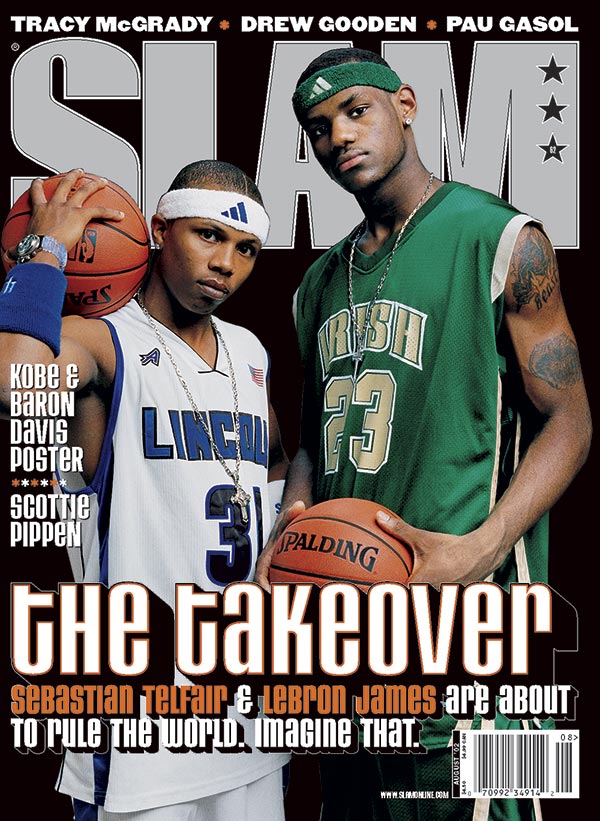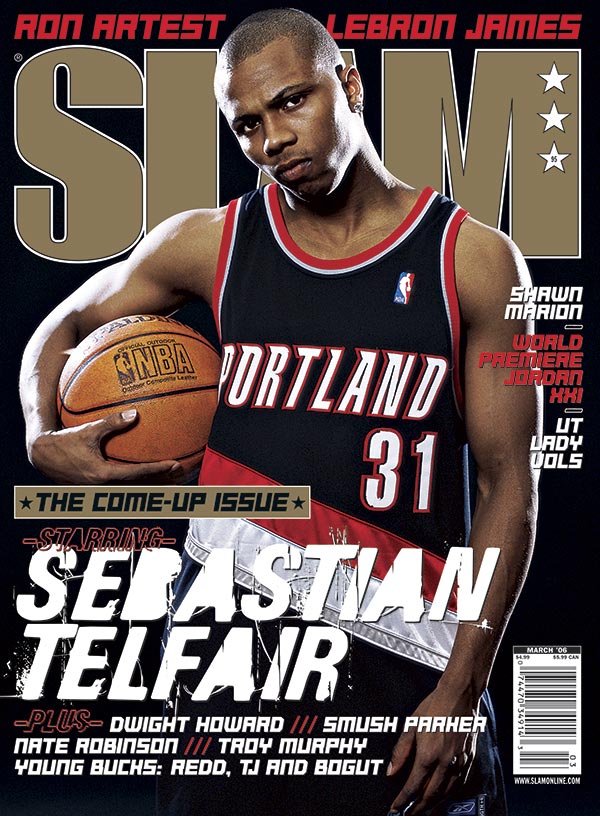For three decades we’ve covered many amazing basketball characters, but some stand above the rest—not only because of their on-court skills (though those are always relevant), but because of how they influenced and continue to influence basketball culture, and thus influenced SLAM. Meanwhile, SLAM has also changed those players’ lives in various ways, as we’ve documented their careers with classic covers, legendary photos, amazing stories, compelling videos and more.
We compiled a group of individuals (programming note: 30 entries, not 30 people total) who mean something special to SLAM and to our audience. Read the full list here and order your copy of SLAM 248, where this list was originally published, here.
Context matters. Context is essential. Context is why a guy who never averaged double digits in 10 NBA seasons belongs in this issue every bit as much as the current and future Hall of Famers he’s surrounded by.
Context starts in Coney Island, Brooklyn, NYC. Once an iconic destination in 20th century American culture, more recently an emblem of what happens when cities shunt poor people into crowded neighborhoods and starve them of resources. The sort of place about which a fellow Brooklynite wrote a famous rhyme about crack rock and jump shots. Maybe more than any single neighborhood in America, a place where a jump shot—or more correctly, a handle and court vision and unrivaled point god swagger—was, for a very select few, the way out.
Sebastian Telfair was one of the few, an inheritor of an immense Coney Island legacy who had to earn the right to claim it.
The legacy was Stephon Marbury’s, a dude whose high school career was crazy enough to inspire a Spike Lee joint and made him the obvious choice to originate this magazine’s Basketball Diary. He, his city, his borough and his neighborhood were all foundational to what SLAM was and became. And, well, Steph and Bassy are cousins. Steph blazed the trail Bassy had to follow, set the bar he had to clear. A blueprint (pun intended, as you’ll see), yes, but the opposite of a handout.
So Bassy followed, younger and smaller and less of a sure thing, and yet undeniable just the same. Visibility and pressure boosted by the lineage, and he embraced all of it. What did we say about handles and court vision and point god swagger? From the first day he suited up for Lincoln High, it was hard to imagine a high school basketball player being more confident, tougher or more fun to watch.
Then came another guy to connect and compare him to, this one a year older, and from somewhere well beyond the five boroughs. In 2001, LeBron James and Sebastian Telfair were co-MVPs in the ABCD Camp underclass all-star game. (If you were in the building, you remember Bassy being the best player on the court.) By the summer of ’02, Bron and Bassy were arguably the best players in their respective classes, and certainly the most talked-about. After that summer, they were linked—for better and worse—for good.

A sneaker industry veteran later referred to it as the weekend that “changed everything” in the grassroots hoops game. With the help of interested parties at one of those footwear giants, LeBron and his people flew into New York on a Friday afternoon in ’02 to link with Bassy and his crew. They went straight from the airport to IS8, a tiny public school gym in Queens that hosted legendary city league games, for the first of two runs against some of New York’s best talent. In between, on Saturday afternoon, they reconvened at the Hunter College gym in Manhattan for a photo shoot. The result was the first SLAM cover for both, and still one of our most memorable front pages in 30 years of doing this.
Bassy had two more years of high school after that, a period in which he won back-to-back NYC public school city titles, a state championship, and the New York state Mr. Basketball award. He also held down our Basketball Diary as a junior, just like Starbury and LeBron before him, further cementing his SLAM legacy. Fellow Brooklynite Jay-Z, then at the height of his hip-hop reign, was spotted courtside at his games, a moment captured in Through the Fire; the film remains an irreplaceable document of a talented hoop dreamer in an unforgettable basketball moment, a time when a 5-10 high schooler could get lottery money and a sneaker deal before the three-point shot and the positionless revolution remade the game. Fans overfilled high school gyms to watch him play, including the woman in Through the Fire who famously declared, “I named my cat Bassy!”
He was the subject of a book, too, not to mention a couple more SLAM covers, a 2004 lottery pick whose NBA career never became quite what he hoped. A year or two of college might’ve helped, and comparisons to his cousin and his guy from Akron did him no favors, nor did landing on rosters that were ill-equipped to compete for titles or to support a young player who had shown that, with the right team around him on and off the court, he could win and handle the spotlight while doing it. He played for eight teams in 10 seasons before he called it a career in 2015. And don’t get it twisted: not just anyone can spend a full decade in the NBA.

What’s his legacy? One of the greatest, most influential high school players in NYC history. The first true point guard drafted straight out of high school. Coney Island royalty. Movie star. And a player our own story simply wouldn’t be the same without.
Photo via Getty Images.